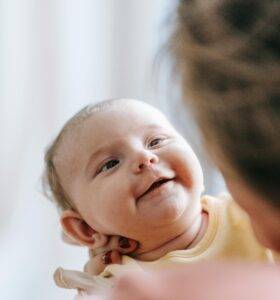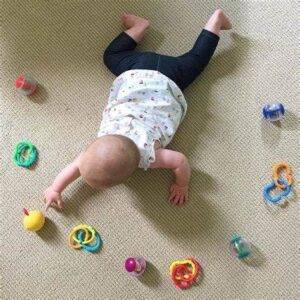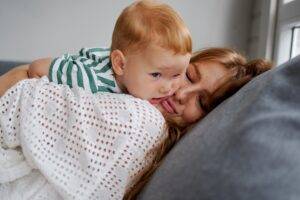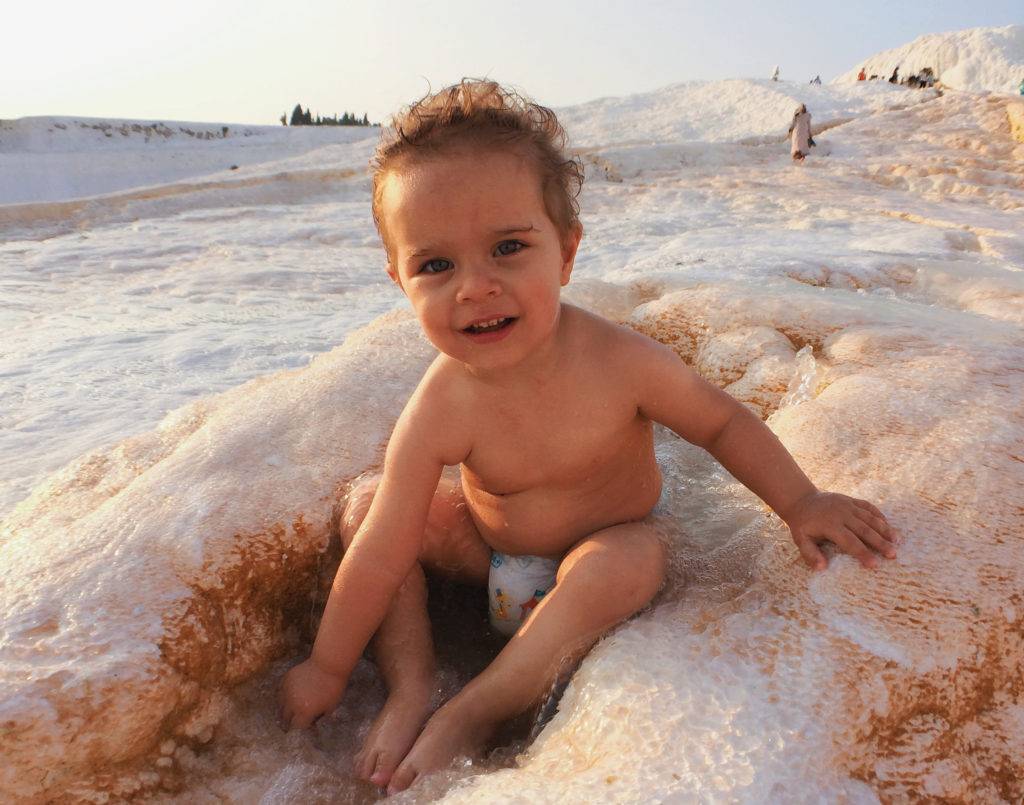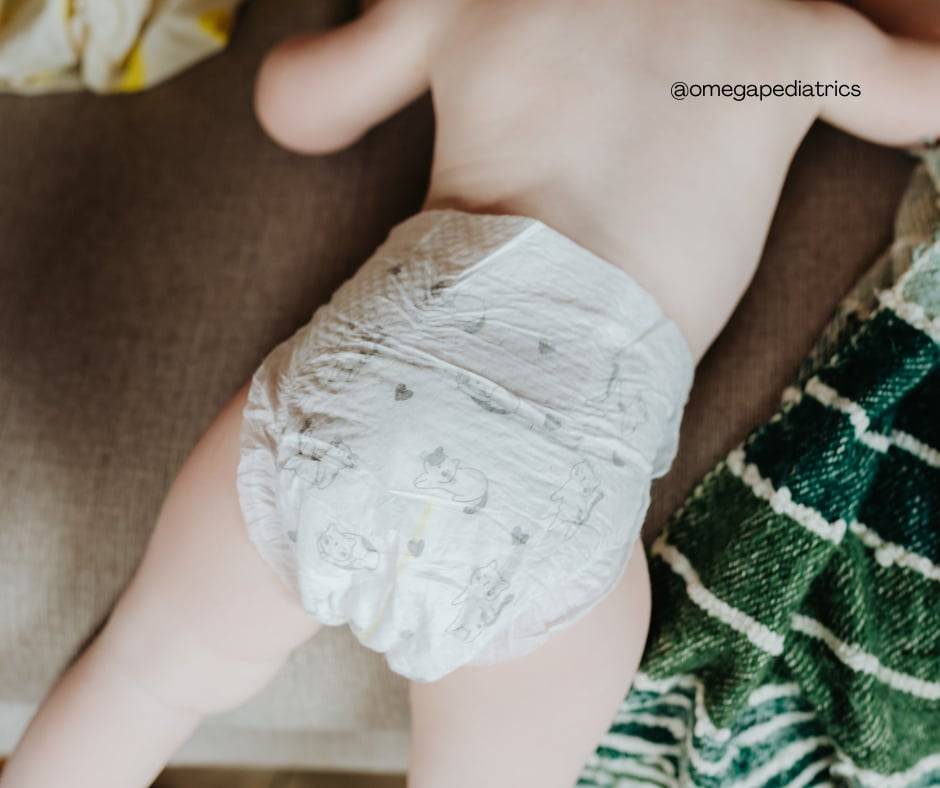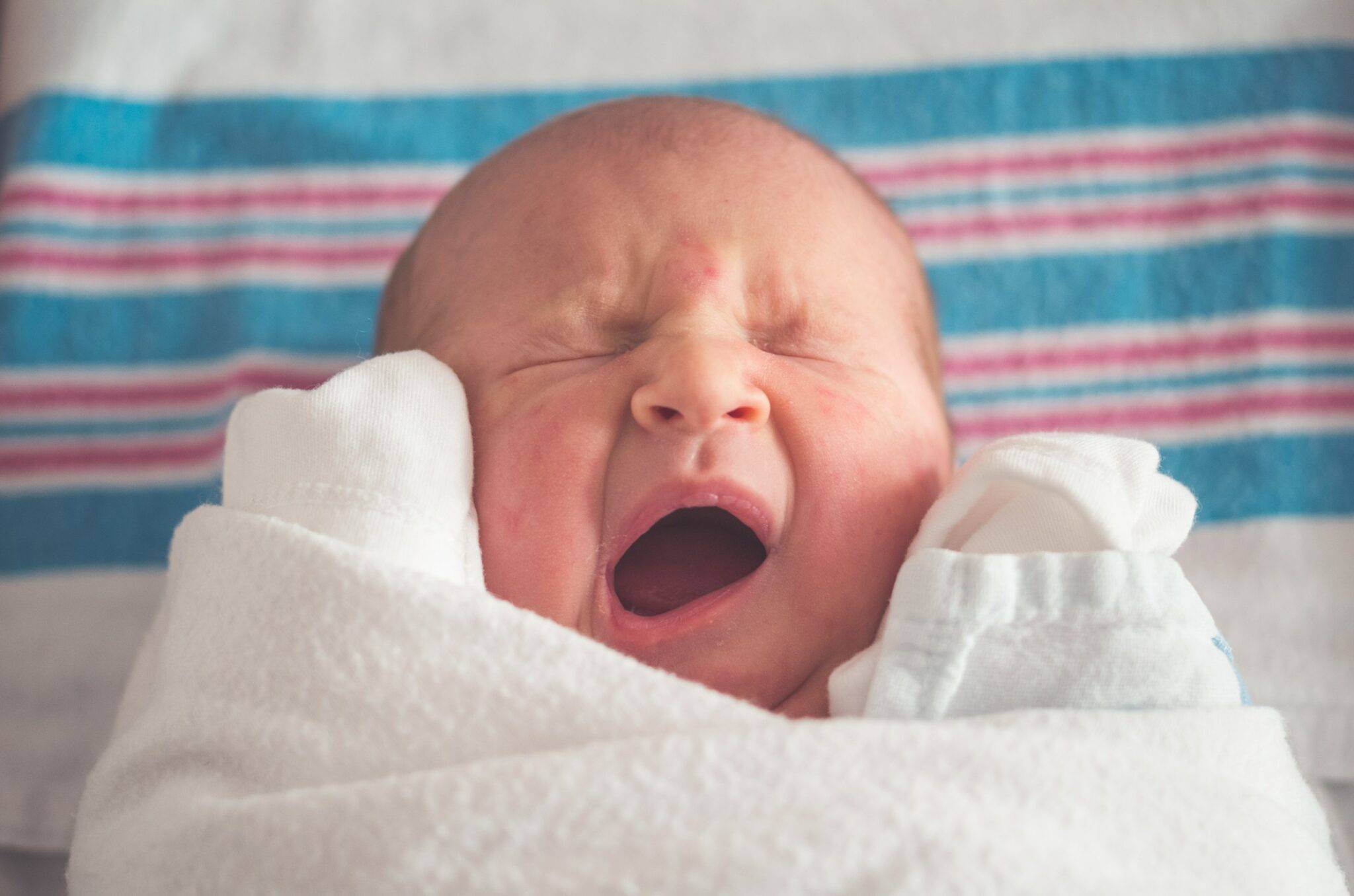Welcoming a newborn into the family is one of life’s most joyous experiences. Along with the excitement, however, come many questions and concerns. One common worry among new parents is noticing their newborn baby without hair. This can be surprising, especially if they expected a baby with a full head of hair.
While this phenomenon might raise concerns, it’s typically a normal part of newborn development. This post will delve into why a newborn baby without hair, offering parents the information to understand this fascinating aspect of newborn development.
Why Newborn Baby Without Hair?
1. Genetic Factors
Genetics plays a pivotal role in determining whether a newborn has hair at birth. Just as genes influence eye color and skin tone, height, and other physical attributes, they also determine hair growth patterns. If parents or close family members were born with little or no hair, it’s likely their baby might share this trait.
Genetic influences play a significant role in the hair growth pattern of a newborn. Some babies inherit genes that predispose them to have less hair at birth. These genetic traits trace back through the family lineage, showing a pattern where several family members were born with sparse hair.
Understanding your family history provides insights into why your newborn baby without hair. Genetics are unique to each individual, making every baby’s hair growth journey distinct.
2. Hormonal Influence
Hormones impact a newborn’s development, including hair growth. During pregnancy, maternal hormones affect the baby in various ways. After birth, the abrupt change in hormone levels leads to hair loss or delayed hair growth, resulting in a newborn baby without hair.
The hormonal environment in the womb is rich and dynamic, contributing to various aspects of fetal development, including hair growth. After birth, the hormonal changes lead to the shedding of hair that grows during pregnancy. This phenomenon is similar to the postpartum hair loss many mothers experience.
The hair growth cycle in newborns is thus highly sensitive to hormonal shifts, which results in temporary hairlessness. This is a natural process, and in most cases, the baby’s hair will begin to grow more noticeably over time as hormone levels stabilize.
3. Premature Birth
Premature babies often have less hair than those born at full term. This is because they haven’t had as much time to develop in the womb. The hair growth cycle might not have fully kicked in, making it common for these tiny ones to be born with little or no hair.
When a baby is born prematurely, their hair follicles may not have had enough time to develop fully. Hair growth, like other aspects of development, progresses with gestational age. The final weeks of gestation are crucial for the development of many body systems, including the integumentary system, which includes hair and skin.
Premature babies may catch up in hair growth as they continue to grow and develop outside the womb, but initially, they might appear with little or no hair. Therefore, babies born prematurely may not have completed their hair growth cycle, resulting in a newborn baby without hair
4. Nutritional Factors
The nutrients a baby receives in utero are critical for their overall development, including hair growth. If the mother experiences nutritional deficiencies during pregnancy, it impacts the baby’s hair development. Ensure a balanced, nutritious diet during pregnancy to support the baby’s growth, including their hair.
A balanced diet rich in vitamins and minerals is essential for fetal development. Nutrients such as proteins, vitamins A, C, D, and E, and minerals like zinc and iron are particularly important for healthy hair growth. If the mother’s diet lacks these nutrients, it impacts the baby’s hair follicles, leading to less hair at birth.
At postnatal, maintaining good nutrition through breastfeeding or formula feeding continues to support the baby’s growth, including hair development.
5. Newborn Hair Shedding
It’s normal for newborns to lose the hair they are born with, a process known as neonatal hair shedding. This process forms part of the hair’s natural life cycle–hair follicles go through shedding and regrowth. The hair a newborn loses is typically replaced with new hair within a few months.
The hair present at birth is in the resting phase (telogen), and shortly after birth, it transitions into the shedding phase. This process leaves the baby with temporary bald patches or a uniformly sparse head of hair. New hair, which grows after this shedding, may have a different texture or color from the initial hair.
The new hair might appear sparse or thin, but it generally thickens over time.
6. Temporary Bald Spots
These develop on a newborn’s head due to friction. These happen when babies lay on their backs for extended periods or rub their heads against the crib mattress. These spots are temporary and resolve as the baby begins to be active, spending less time lying in one position.
Babies who spend extended periods in one position develop bald spots where their heads contact with surfaces like mattresses or car seats. This type of hair loss is purely mechanical and not indicative of any underlying health issue.
As the baby grows and starts to be mobile moving around, these bald spots will be filled in with new hair growth. Conversely, for younger babies and to minimize friction, parents gently reposition their babies’ heads and ensure they have a soft, clean surface to lie on.
7. Cradle Cap
This is a condition common among newborns, affecting hair growth. It appears as thick, yellow, or white crusty patches on the baby’s scalp. While it’s harmless, it interferes with hair growth in the affected areas. Proper care and gentle cleansing manage cradle cap, allowing hair to grow back normally.
Cradle cap, or seborrheic dermatitis, is characterized by oily, yellowish scales on the scalp. It’s thought to result from overactive sebaceous glands in the skin, possibly influenced by maternal hormones. It may look concerning, but it doesn’t bother the baby and can be relieved through gentle scalp massage and shampooing.
Additionally, you may use a hairbrush with soft bristles to gently remove the scales and apply baby-safe oils. Over time, the condition resolves on its own, allowing hair to grow back in the affected areas.
8. Scalp Infections
Occasionally, scalp infections cause a newborn baby without hair. Fungal infections, such as ringworm, cause hair loss. If you suspect your baby has, consult a pediatrician for appropriate treatment. Addressing the infection promptly ensures the baby’s hair grows back healthy and strong.
Scalp infections, though rare in newborns, disrupt hair growth. Fungal infections, such as tinea capitis, cause patches of hair loss accompanied by inflammation or scaling of the scalp. Early intervention with antifungal medications treats the infection effectively, allowing normal hair growth to resume.
Monitor your baby’s scalp for any unusual changes and seek prompt medical advice.
9. Alopecia Areata
This is an autoimmune condition that causes hair loss in babies and adults. Although less common, it’s a possible reason for a newborn baby without hair. This condition leads to patchy hair loss, making the scalp look inflamed. If you notice this symptom, seek medical advice to manage the condition and explore potential treatments.
Alopecia areata involves the immune system mistakenly attacking hair follicles, leading to hair loss. In newborns, this condition manifests as smooth, round bald patches on the scalp. Though it can be alarming, alopecia areata is manageable with medical intervention. In some cases, hair regrowth occurs spontaneously without treatment.
Consult a healthcare provider for an accurate diagnosis and management plan.
10. Natural Hair Cycle
Hair growth in babies follows a unique and individual pattern. Each baby’s hair growth cycle is unique. Some newborns come into the world with a full head of hair, while others have very little. This variation is normal and influenced by individual differences in development and natural hair cycles.
Factors such as genetics, prenatal environment, and postnatal care influence this cycle. It’s common for babies to have full hair at birth, which they shed and regrow in the following months, which differs in texture and color from their birth hair. Others start with sparse hair and gradually develop a fuller head of hair over time.
These variations are typically normal and not a cause for concern.
Caring for Your Newborn’s Scalp and Hair
Maintaining a clean and healthy scalp promotes hair growth in newborns. Dead skin cells at the scalp impede hair growth, hence:
- Gentle washing with mild, baby-safe shampoo to keep the scalp clean and oil-free.
- After a bath, pat dry the scalp, instead of rubbing, with a soft towel. Pat drying minimizes friction to reduce the risk of temporary bald spots.
- Use a soft-bristled baby brush to comb and stimulate the scalp, promoting healthy hair growth.
- Avoid adult shampoos or harsh chemicals, as these irritate a baby’s delicate scalp.
Supporting Healthy Hair Growth
To support your baby’s hair growth, focus on overall health and well-being. Ensure they’re getting adequate nutrition, plenty of rest, and regular check-ups with their pediatrician. Keeping your baby’s scalp clean and managing conditions like cradle cap also help maintain a healthy environment for hair growth.
- Encourage Tummy Time: This is essential for a baby’s development and prevents bald spots caused by lying on their back for extended periods. Supervised tummy time encourages your baby to move and strengthen their muscles, including those in their neck and back, which reduces the likelihood of friction-related hair loss.
- Choose the Right Products: Select the right hair care products for your baby. Opt for gentle, hypoallergenic products designed specifically for babies. Avoid products with strong fragrances, dyes, or harsh chemicals, as these irritate your baby’s sensitive skin and scalp. If your baby has scalp conditions, your pediatrician recommends specialized products.
Embracing Your Baby’s Unique Journey
Every baby is unique, and their hair growth journey is no exception. While some babies are born with a full head of hair, others take a little longer to sprout their first locks. Embrace your baby’s unique journey and focus on their overall health and happiness. Hair will grow in due time, and your baby will continue to thrive with your love and care.
When to Seek Medical Advice
While it’s common for newborn baby without hair or to lose their hair after birth, there are times when consulting a doctor is a wise move. If your baby’s hair loss is accompanied by other symptoms such as redness, and swelling, or if the hair doesn’t seem to be growing back after several months, seek medical advice.
Your pediatrician will rule out any underlying conditions and provide reassurance or the needed treatment.
Debunking Myths About Newborn Hair Growth
There are many myths and misconceptions about newborn hair growth.
- Myth: Shaving a baby’s head will make the hair grow back thicker and stronger. Fact: Hair growth is determined by the hair follicles beneath the skin, not by shaving. Shaving has no impact on the texture or thickness of the hair that grows back.
- Myth: Certain foods or oils boost hair growth in newborns. Fact: While a balanced diet and proper nutrition are crucial for overall development, there’s no scientific evidence that specific foods or oils speed up the hair growth process in babies.
Nurture Special Moments while Newborn Hair Grows and Develops
A newborn baby without hair can be a surprise for many parents, but in most cases, it’s perfectly normal and nothing to worry about. Understanding the reasons behind this helps alleviate concerns and allows parents to focus on enjoying their new arrival.
Each baby is unique, and their hair growth is just one small part of their incredible journey. Enjoy every moment with your little one, knowing that hair or no hair, they’re growing, developing, and bringing immense joy to your life.
For more information on caring for your newborn, check out these helpful articles on Omega Pediatrics. These resources provide valuable insights into various aspects of newborn care, ensuring you have the support you need during this special time.

